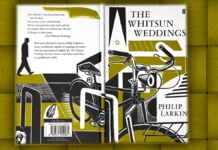Travel writing is a captivating genre that allows readers to explore different parts of the world through the eyes of the writer. It is a form of storytelling that invites us to embark on a journey filled with vivid descriptions, personal anecdotes, and cultural insights. Through travel writing, we can experience the thrill of discovering hidden gems, taste the flavours of foreign cuisines, and immerse ourselves in the rich tapestry of diverse cultures. Whether it’s a remote village in the mountains or a bustling cityscape, travel writing has the power to transport us to far-off places and ignite our wanderlust.
Travel writing is a literary genre that encompasses various styles, including adventure stories, guidebooks, personal travel diaries, blogs, and essays, amongst others. It goes beyond mere description and serves as a window into the author’s personal experiences and reflections, allowing readers to vicariously explore the world through their eyes. The best travel writing not only paints a vivid picture of the destinations but also delves into the nuances of local customs, history, and social dynamics, providing readers with a deeper understanding of the places they visit. It is a form of storytelling that sparks curiosity, inspires adventure, and encourages cultural exchange.
Purpose
The purpose of travel writing goes beyond simply describing a place. It aims to transport readers to different corners of the globe, evoking a sense of wanderlust and igniting a desire to explore. By sharing personal experiences and reflections, travel writers hope to connect with readers on a deeper level, fostering a sense of empathy and understanding for cultures and people outside of their own.
A fundamental aspect of travel writing is presenting firsthand experiences and observations. This genre often revolves around themes such as discovery, culture shock, or encounters with diverse cultures. It brings together factual details about a place, such as its history, geography, and culture, with the subjective impressions of the writer. It’s a vehicle for understanding and describing different cultures, peoples, and settings, giving readers insights into aspects of the world that they may not have the opportunity to experience themselves.
Key Elements
Personal Perspective
Travel writing is often written in the first-person, offering a personal perspective and subjective viewpoint of the author’s experiences. Readers get insight into the writer’s thoughts, emotions, and reactions to the places they explore.
Description and Detail
Travel writers excel at describing landscapes, architecture, local customs, cuisine, and other aspects of the destination. They use descriptive language and sensory details to create a rich and evocative portrayal of the location.
Cultural Exploration
Travel writing frequently delves into the culture, history, and traditions of the places visited. Writers may highlight unique customs, rituals, festivals, and social dynamics they encounter, helping readers gain a deeper understanding of the destination.
Adventure and Discovery
Travel writing often revolves around the thrill of discovery and adventure. Writers may recount exciting or challenging experiences, from hiking in remote wilderness to navigating bustling markets in foreign cities.
Narrative Structure
Many travel narratives follow a narrative structure, with a beginning, middle, and end. They may include an introduction to the destination, the journey or quest, and reflections or insights gained along the way.
Reflection and Insight
Travel writers often use their experiences to reflect on broader themes, such as cultural differences, personal growth, or the human condition. These reflections can provide readers with valuable insights and perspectives.
Historical and Geographical Context
Travel writing may provide historical and geographical context to help readers better understand the significance of the places visited. This can include discussing the history of a region, its geographical features, or its place in the world.
Voice and Style
Each travel writer has a unique voice and writing style that can add personality and authenticity to their work. Some travel writers are humorous and lighthearted, while others adopt a more serious or contemplative tone.
Photography and Illustrations
Travel writing often incorporates photographs, illustrations, or maps to complement the text and provide visual context for readers.
Influence and Inspiration
Travel writing has the power to inspire and influence readers to explore new places, learn about different cultures, and embark on their adventures.
Importance
The importance of travel writing in the field of journalism and literature lies in its ability to provide a unique perspective and insight into different cultures and societies. Travel writers often act as cultural ambassadors, shining a light on lesser-known destinations and shedding light on the experiences of marginalized communities. In journalism, travel writing can serve as a tool for breaking stereotypes and challenging preconceived notions, while in literature, it allows readers to embark on a virtual journey and experience the world through the writer’s eyes.
Notable Examples
- The Motorcycle Diaries by Che Guevara is a classic travelogue that chronicles Guevara’s journey through Latin America.
- Eat, Pray, Love by Elizabeth Gilbert is a memoir about Gilbert’s journey of self-discovery through Italy, India, and Bali.
- The Beach by Alex Garland is a fictional travelogue about a group of friends who travel to a remote beach in Thailand.
- The Road Less Traveled by M Scott Peck is a non-fiction book about the importance of taking risks and living life to the fullest.
- Travels with Charley by John Steinbeck is a travelogue about Steinbeck’s journey across the United States with his dog, Charley.
- On the Road by Jack Kerouac is based on the author’s spontaneous road trips with his friends across mid-century America.
Good travel writing not only describes a place’s sights and sounds but also evokes a sense of the emotions and the transformative experiences that travel can offer. The writer’s reflection and interpretation of their travel experiences make each piece of travel writing unique. While it entertains and informs, travel writing, at its best, can also provide social commentary, reflective insights about humanity, and deeper understandings of the self. Today, travel writing continues to thrive in various forms, from traditional print publications to online blogs and social media accounts, allowing a diverse range of voices to share their journeys with a global audience.





























